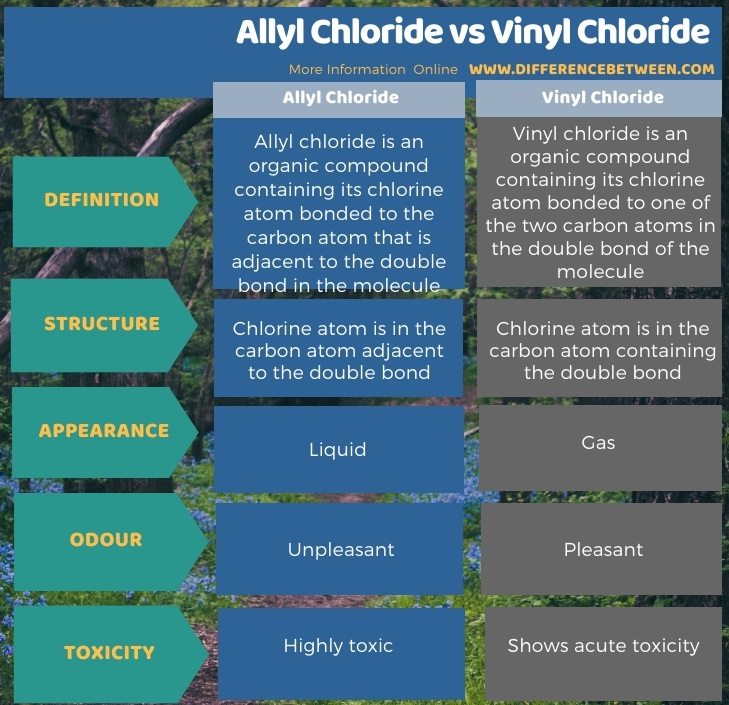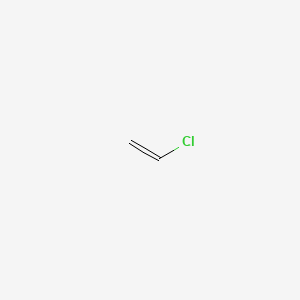Difference Between Allyl Chloride And Vinyl Chloride

The key difference between these two structural components is the number of carbon and hydrogen atoms.
Difference between allyl chloride and vinyl chloride. The number of carbon and hydrogen in the ally group are three carbon atoms and five hydrogen atoms whereas that of the vinyl group is two carbon atoms and three hydrogen atoms. Difference between allyl and vinyl in tabular form. The molecular formula of the ally carbon group is rch2ch ch2 while that of the vinyl group is rch ch2. Most of vinyl derivatives are used in polymer industry.
Key difference allyl vs vinyl both allyl and vinyl groups have slightly similar structures with a small variation. Vinyl are widely used in different industries most prominently they are used in making plastic films textile finishing and also produces vinyl polymers such as polyvinyl chloride pvc polyvinyl fluoride pvf and polyvinyl acetate pvac. The terms allyl and vinyl are common in organic chemistry because we can use these terms to name compounds using. The key difference between allyl chloride and vinyl chloride is that ally chloride contains its chlorine atom bonded to the carbon atom that is adjacent to the double bond whereas vinyl chloride contains its chlorine atom bonded to one of the two carbon atoms in the double bond.
Core differences between allyl and vinyl in point form. Allyl groups have three carbon atoms and five hydrogen atoms. In vinyl chloride cl is linked with sp2 hybridized carbon whereas in allyl chloride cl is linked with the sp3 hybridized carbon as sp2 hybridized carbon is more electronegative then sp3 hybridized cl can more easily attract the bonded electrons from sp3 carbon and therefore is more reactive.










































